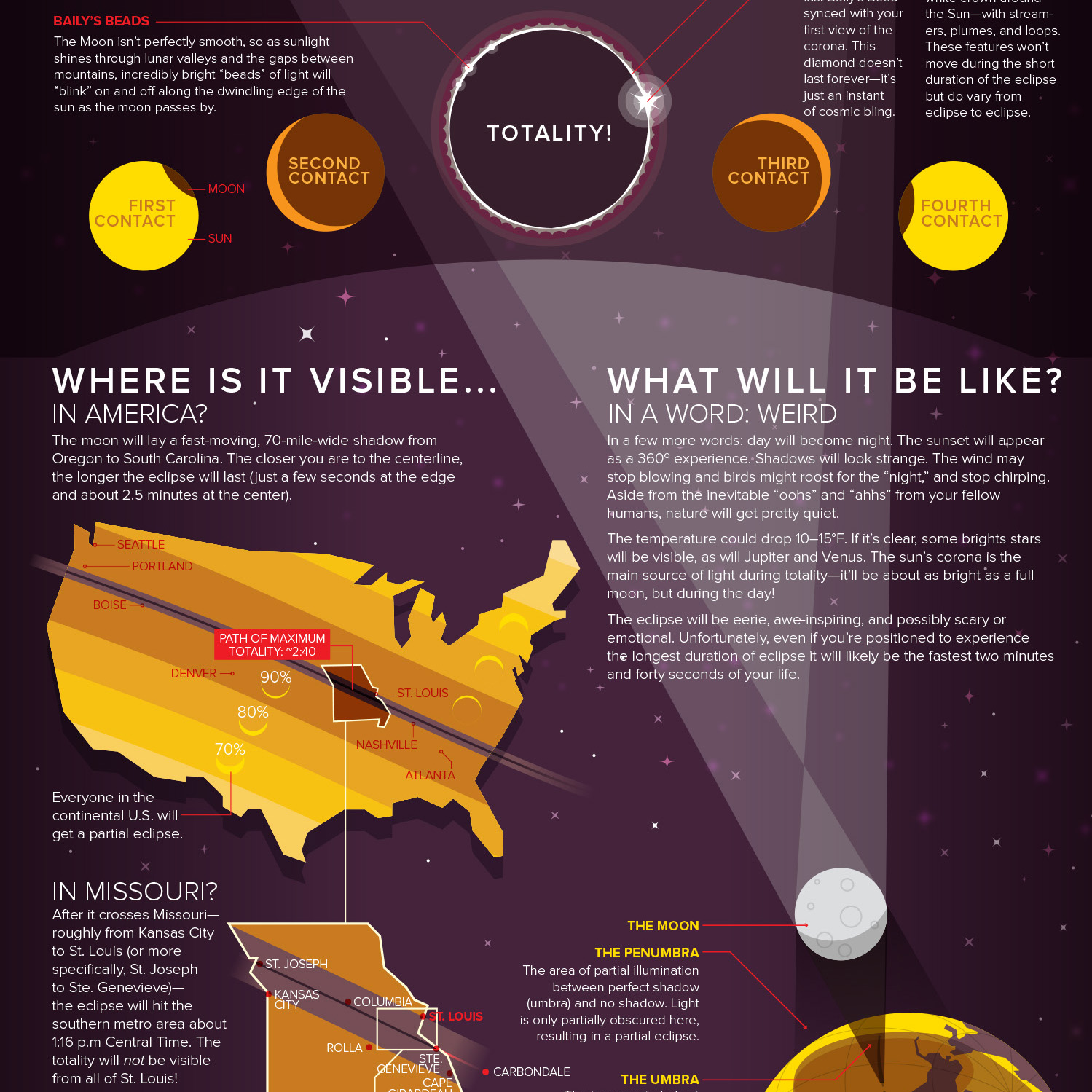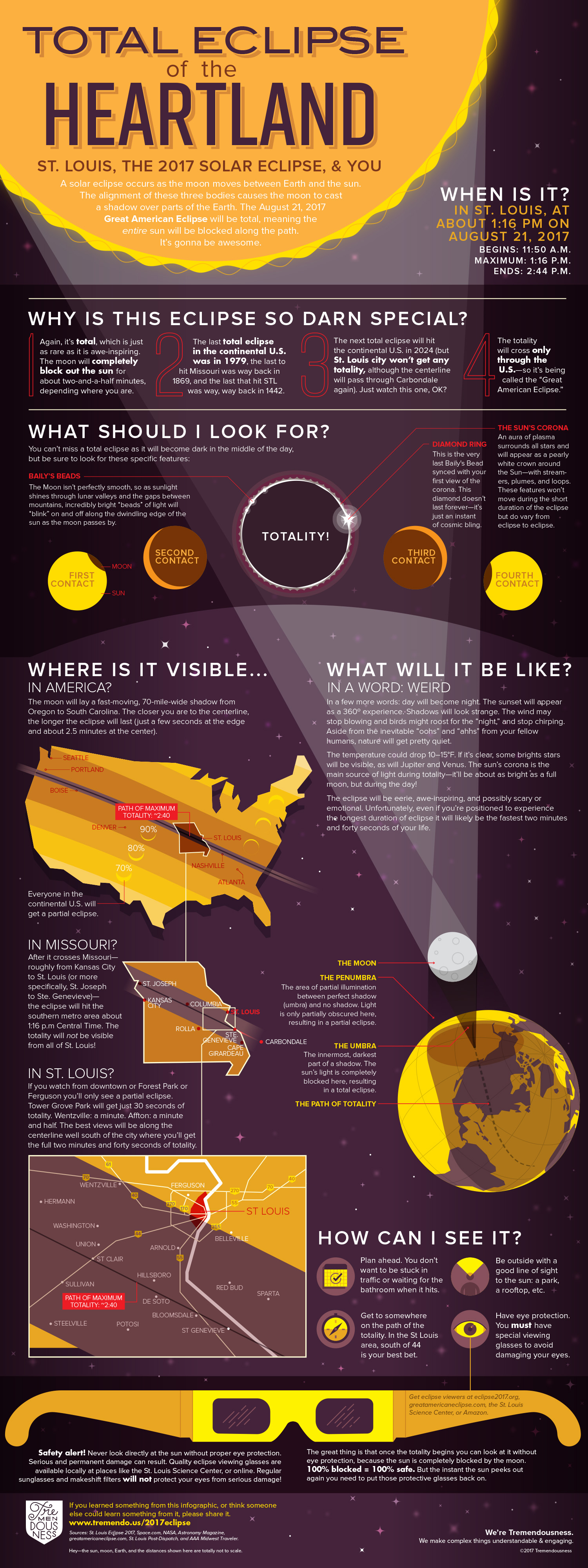I’m just gonna repost what I wrote over at Tremendousness, since it works just fine:
St. Louis, the 2017 solar eclipse, and you.
In a little more than a month, on August 21, 2017, the United States will experience a total solar eclipse.
It’s gonna be awesome.
A solar eclipse occurs as the moon moves between Earth and the sun. The alignment of these three bodies causes the moon to cast a shadow over parts of the Earth. The August 21, 2017 Great American Eclipse will be total, meaning the entire sun will be blocked along the path. This hasn’t happened in St. Louis since 1442.
If you’re within the 70-mile-wide boundary of the totality, you can experience anywhere from just a few moments to two minutes and forty seconds of full eclipse. But know this: St. Louis itself is on the outer edge of the totality—much of the area will only get a partial eclipse, like the rest of the continental U.S. To make the most of it, you’ll have to head south: St. Clair, De Soto, Ste. Genevieve, and Carbondale will get the maximum effect.
We’re quite excited about this, so we decided to make an infographic just for our fellow St. Louisans. In it we explain:
- When and where to see the eclipse
- Why this one is so special
- How solar eclipses work
- Cool features to look for
- Strange conditions to expect
- How to safely view the eclipse
If you learn something from this infographic, or think someone else could learn something from it, please share it!
Love,
Your friends at Tremendousness, where we make complex things understandable & engaging
As usual, big thanks to Chris Roettger for bringing my rough ideas and words to life with her illustrations.
View it here: www.tremendo.us/2017eclipse.



